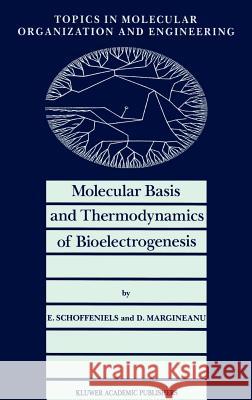Molecular Basis and Thermodynamics of Bioelectrogenesis » książka
Molecular Basis and Thermodynamics of Bioelectrogenesis
ISBN-13: 9780792309758 / Angielski / Twarda / 1990 / 182 str.
Molecular Basis and Thermodynamics of Bioelectrogenesis
ISBN-13: 9780792309758 / Angielski / Twarda / 1990 / 182 str.
(netto: 362,06 VAT: 5%)
Najniższa cena z 30 dni: 381,06 zł
ok. 16-18 dni roboczych.
Darmowa dostawa!
Despite the fact that many years have elapsed since the first microcalorimetric measurements of an action potential were made, there is still among the research workers involved in the study of bioelectrogenesis a complete overlooking of the most fundamental principle governing any biological phenomenon at the molecular scale of dimension. This is surprising, the more so that the techniques of molecular biology are applied to characterize the proteins forming the ionic conducting sites in living membranes. For reasons that are still obscure to us the molecular aspects of bioelectrogenesis are completely out of the scope of the dynamic aspects of biochemistry. Even if it is sometimes recognized that an action potential is a free energy-consuming, entropy-producing process, the next question that should reasonably arise is never taken into consideration. There is indeed a complete evasion of the problem of biochemical energy coupling thus reducing the bioelectrogenesis to only physical interactions of membrane proteins with the electric field: the inbuilt postulate is that no molecular transformations, in the chemical sense, could be involved.











